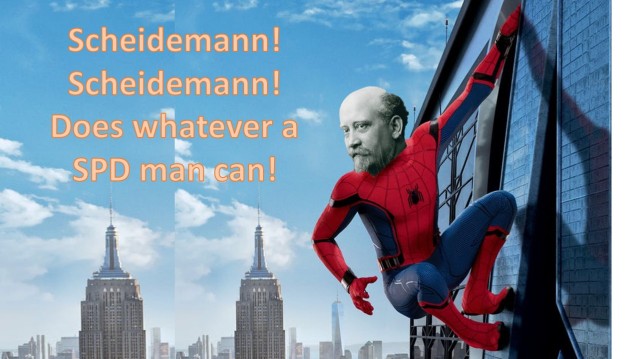History modules that cover the period 1918-1945 of Germany are generally lop-sided. The main focus tends to come in the form of the latter half when the Nazis take power in 1933, and the earlier Weimar period is side-lined. Much of this understandable, perhaps due to the complexities of Weimar Germany: its erratic political landscape and its inability to deal with its economic problems. Also, the Nazi period has more distinctive characters that students are more well-versed in, such as Himmler and Goebbels. By comparison, some key players of the Weimar period are dull and monotone; these include even Ebert, the president of the new Republic from 1919-1925.
Arguably, this is where a bit of creative meme building can come and help with the balance, bringing some life once again to the earlier period of the module. I’ve covered historical memes in a previous post, where one of the images attempted to convey the fear of the creaking economic system in the form of Gustav Stresemann dancing on a volcano:

For me, anyhow, the image is now more firmly cemented in my mind. So, perhaps more can be done with this regard with other characters of the period. Step forward, Philipp Scheidemann.
Scheidemann was a member of the Social Democrat Party in Germany at the end of the First World War. He is notable because he was the one to break the news of the Kaiser’s abdication on 9th November 1918. Whilst attempting to pronounce his name in an A-level class I was lucky enough to have a German student in the session who could help me out.
“Scheider-mann,” the student said.
“Scheider-mann,” I repeated, before then saying, “Oh, like Spider-man?”
This led to a new rendition of the Spider-man song, which has led me to the creation of this meme.

The combining of historical figures with those from the MCU has been something of a hobby of mine over the past year, generally attempting to combine two loves/interests in an attempt to tighten the memory’s hold of the specification content. The intention here isn’t to belittle the likes of Philipp Scheidemann, but rather to approach the material in a different light, providing the opportunity for students to cement key ideas.
